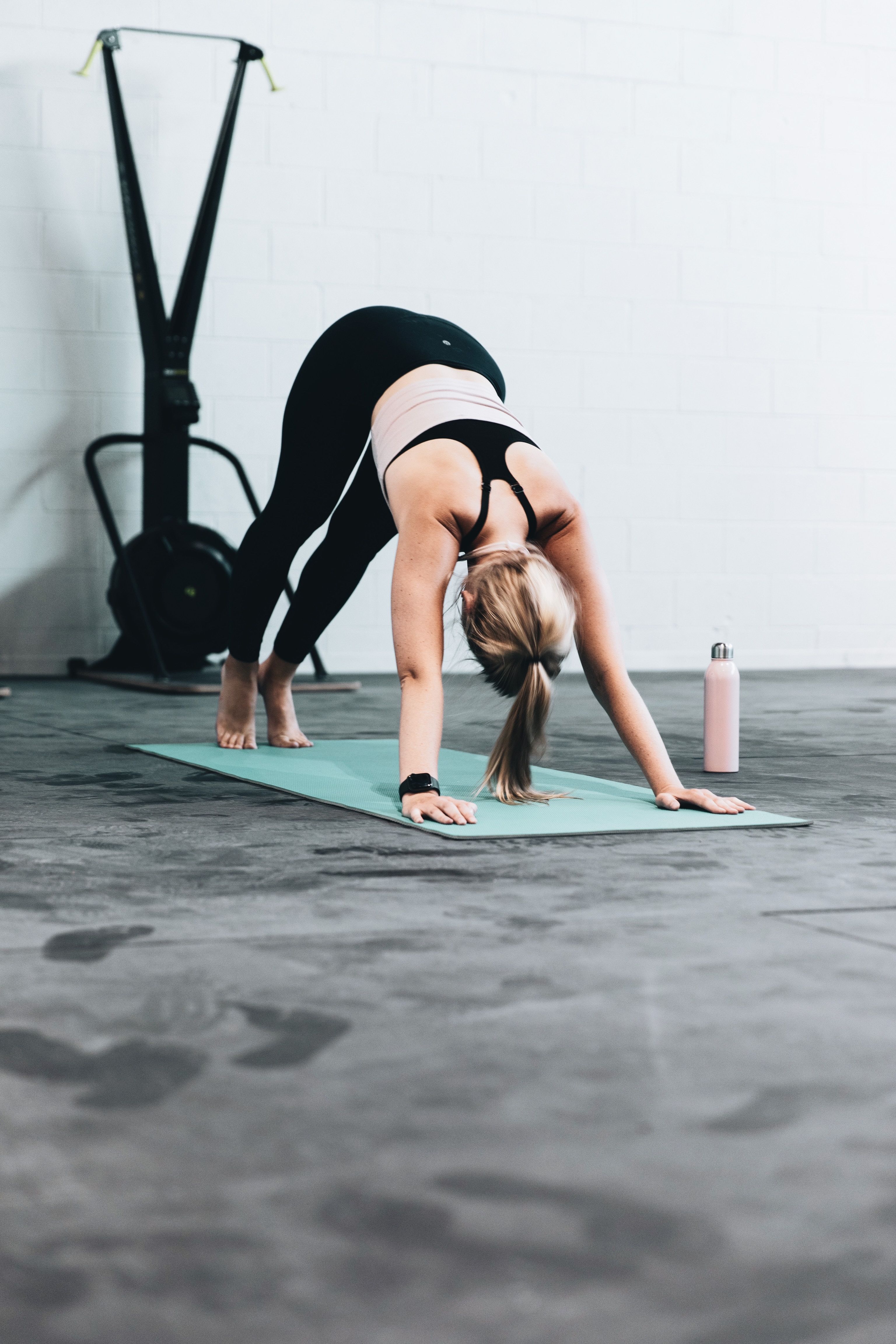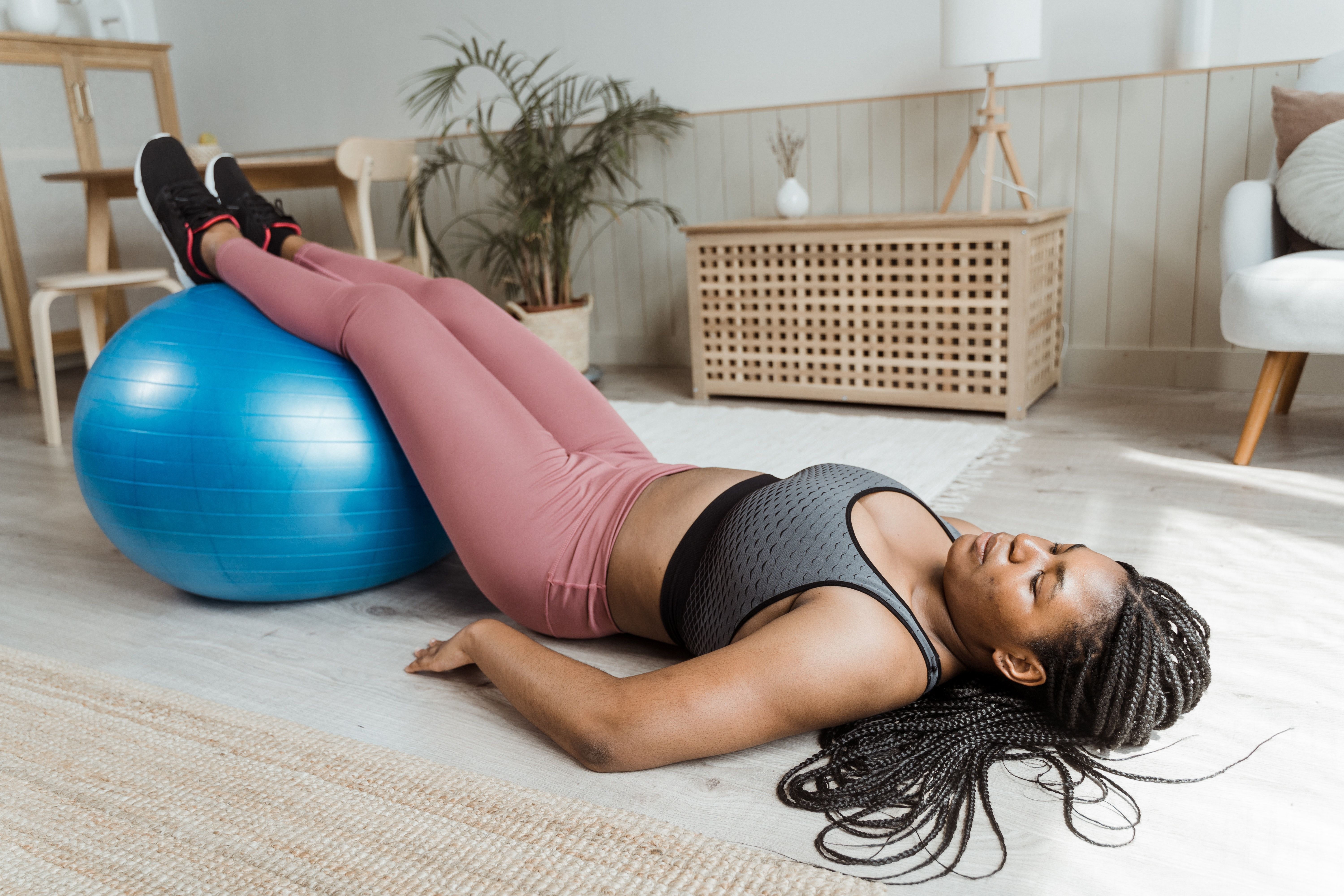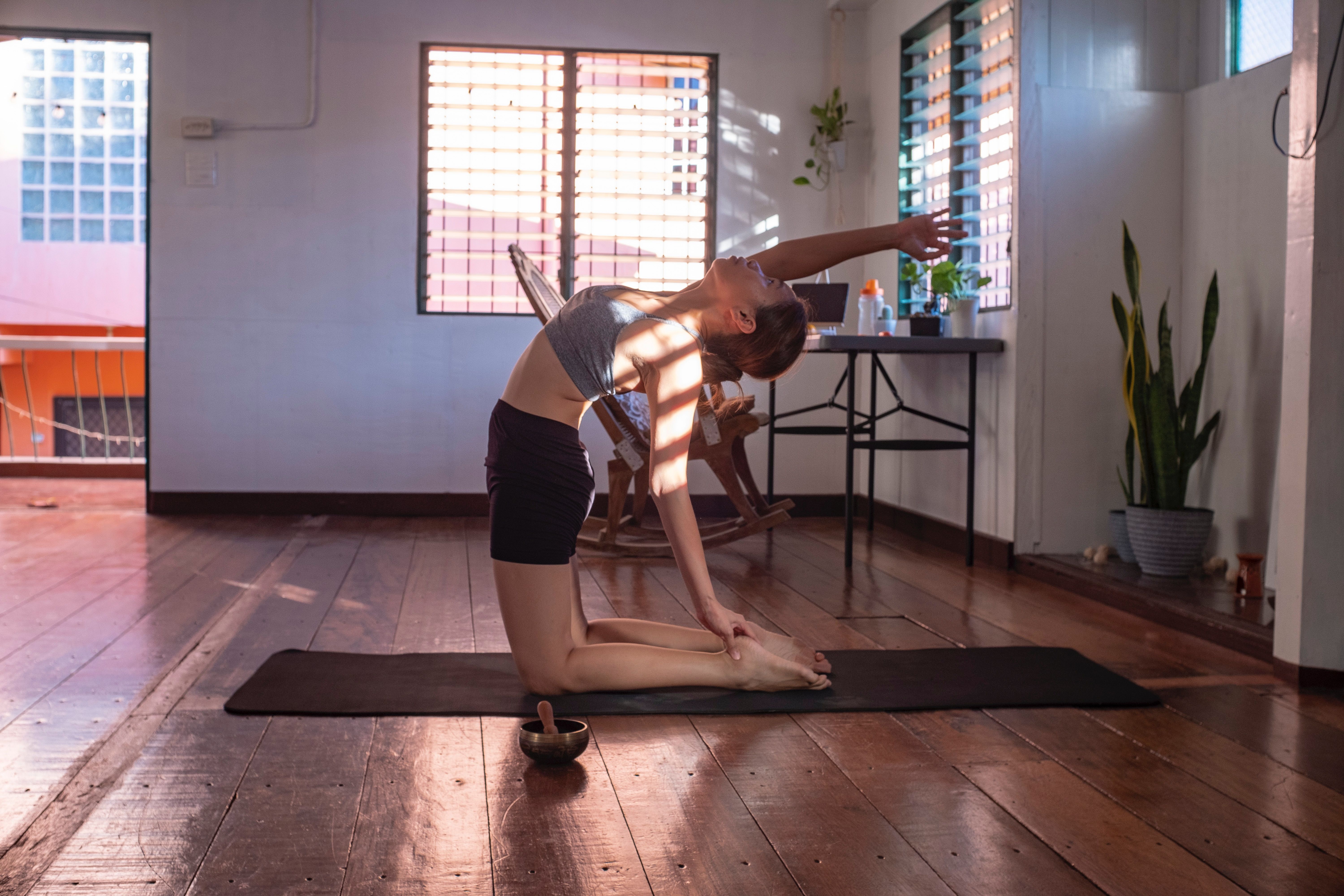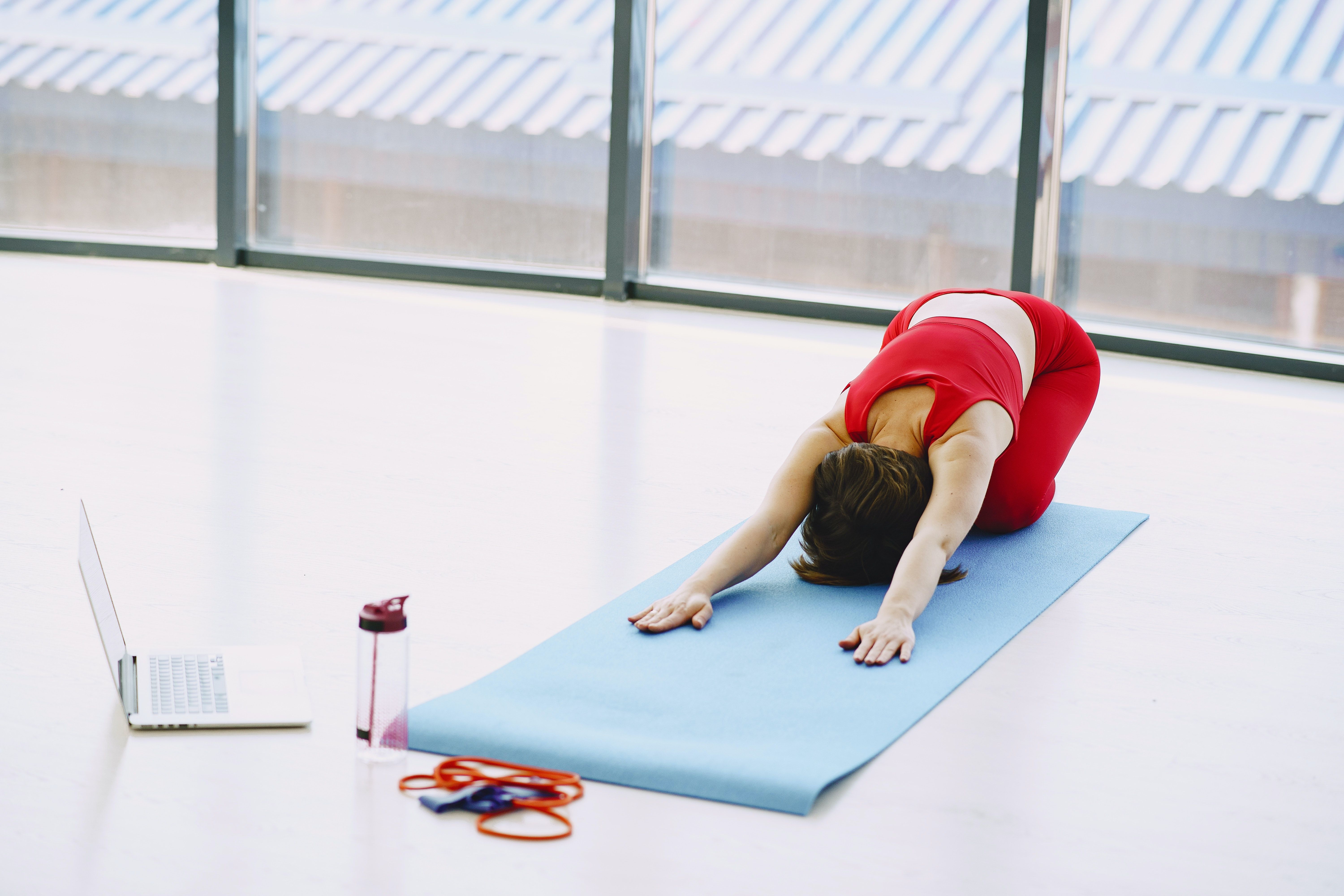Home Workout: Advantages, Disadvantages, Basic Equipment and Exercises



Losing weight can be achieved with home exercise. With just a few pieces of equipment, you can work out effectively at home. There are advantages and disadvantages to working out at home, and they might change based on personal preferences and situations.

Advantages of Exercising at Home:
Convenience: One of the most significant advantages is convenience. You can work out at any time that suits your schedule without the need to travel to a gym or fitness center. This flexibility can make it easier to establish and maintain a consistent exercise routine.
Cost Savings: Home workouts can be more budget-friendly in the long run. You don't need to pay for a gym membership or expensive fitness classes. Minimal equipment, if any, is required.
Privacy and Comfort: Some people feel more comfortable exercising at home, away from the judgment or distractions of others. You can also wear whatever you like and create a personalized workout environment.
Time Efficiency: You can save time by eliminating the need to commute to and from a gym. Short, focused workouts at home can be just as effective as longer gym sessions.
Family and Community Involvement: Exercising at home can allow family members to join in, fostering a sense of community and promoting physical activity among loved ones.
Disadvantages of Exercising at Home:
Limited Equipment: Unless you invest in home gym equipment, you may have limited options for resistance training and variety in your workouts. This can be a disadvantage if you're looking to build muscle or diversify your routine.
Lack of Motivation: Some individuals find it challenging to stay motivated when working out at home due to the absence of a fitness community, social interaction, and the distractions of the home environment.
Space Limitations: Small living spaces may not provide enough room for certain types of exercises or equipment, limiting workout possibilities.
Accountability: Without a structured environment like a gym or fitness class, some people may struggle with self-discipline and accountability in maintaining a regular exercise routine.
Inadequate Guidance: Beginner exercisers or those needing specialized guidance might miss out on the expertise and support of fitness trainers and instructors available in gyms or studios.
Monotony: Home workouts can become repetitive over time, which may lead to boredom and a lack of enthusiasm for exercise.

Basic Workout Equipment and Some Exercises You Can Do with Them:
Yoga Mat or Exercise Mat: A mat provides a comfortable and non-slip surface for various exercises, including yoga, bodyweight exercises, and stretching.
Resistance Bands: Resistance bands are versatile and can be used for various strength exercises. You can find bands of different resistance levels. Exercises include:
- Banded squats
- Banded push-ups
- Banded rows
- Banded leg lifts
- Banded lateral raises
Dumbbells: Dumbbells can be used for strength training and can be purchased in different weights. Exercises include:
- Dumbbell squats
- Dumbbell lunges
- Dumbbell bicep curls
- Dumbbell shoulder presses
- Dumbbell rows
Kettlebell: A single kettlebell can be used for various full-body exercises, including:
- Kettlebell swings
- Kettlebell goblet squats
- Kettlebell Turkish get-ups
Jump Rope: Jumping rope is an excellent cardio workout and requires minimal space. It's great for burning calories and improving cardiovascular fitness.
Pull-Up Bar: If you have a sturdy door frame or wall-mounted pull-up bar, you can perform pull-ups and hanging leg raises for upper body and core strength.
Stability Ball: A stability ball can be used for core exercises, balance, and flexibility work. Exercises include:
- Stability ball planks
- Stability ball squats
- Stability ball rollouts
Suspension Trainer: Suspension trainers, like TRX, can be hung from a door or anchor point and provide a full-body workout. Exercises include:
- TRX rows
- TRX push-ups
- TRX squats
Foam Roller: While not for exercise, a foam roller is useful for self-myofascial release, helping to reduce muscle tension and improve flexibility.
Timer or Smartphone App: A timer is handy for interval training workouts. You can also use smartphone apps that provide guided workouts and timers for various exercises.
Water Bottle or Dumbbell Alternative: If you don't have dumbbells, you can fill water bottles or use other household items as substitutes.

Remember that you can create effective workouts by combining bodyweight exercises with these minimal equipment options. Your workouts should be tailored to your fitness level and goals. Always ensure proper form and technique to prevent injury. Additionally, if you're new to exercise or have any underlying health conditions, consult with a fitness professional or healthcare provider to ensure you're following a safe and effective workout program.
A home workout can be an effective way to stay fit and active, even if you have limited space or equipment. Here's a sample home workout routine that combines cardio, strength, and flexibility exercises:
Warm-Up (5-10 minutes):
- Jumping jacks: 1 minute
- Bodyweight squats: 1 minute
- Arm circles: 1 minute
Strength Training (20-30 minutes): Strength training is essential for weight loss, as it helps increase your metabolic rate and build lean muscle mass. You can perform exercises like:
- Push-Ups: Aim for 3 sets of 10-15 repetitions.
- Bodyweight Squats: Aim for 3 sets of 15-20 repetitions.
- Planks: Hold for 30 seconds to 1 minute for 3 sets.
- Chair Dips: Aim for 3 sets of 10-15 repetitions.
Cardio (20-30 minutes): Cardio workouts help burn calories and promote weight loss. You can do:
- Jumping jacks: 2 minutes.
- High knees: 2 minutes.
- Burpees: 2 minutes.
- Running in place: 2 minutes.
- Dancing to your favorite music: 10-15 minutes.
Cool Down (5-10 minutes):
- Stretching: Stretch your major muscle groups to help prevent injury and improve flexibility. Focus on your legs, arms, back, and core.
Hydration and Nutrition: Staying hydrated and maintaining a balanced diet is crucial for weight loss. Make sure to drink water before, during, and after your workout. Focus on a diet rich in lean protein, whole grains, fruits, vegetables, and healthy fats. Avoid excessive sugar and processed foods.
Consistency: Consistency is key when it comes to losing weight through exercise. Try to work out 3-5 times per week. As you progress, you can increase the intensity and duration of your workouts.
Rest: Ensure you get enough sleep and allow your body to recover between workouts. Rest is crucial for muscle repair and overall well-being.

It's important to keep in mind that losing weight requires more than just exercise—a balanced diet and healthy lifestyle are also necessary. Before beginning any new fitness program, it's also a good idea to speak with a healthcare provider or a licensed fitness trainer, particularly if you have any underlying medical concerns or are new to exercising. They can assist you in creating a program that is specific to your requirements and objectives.

